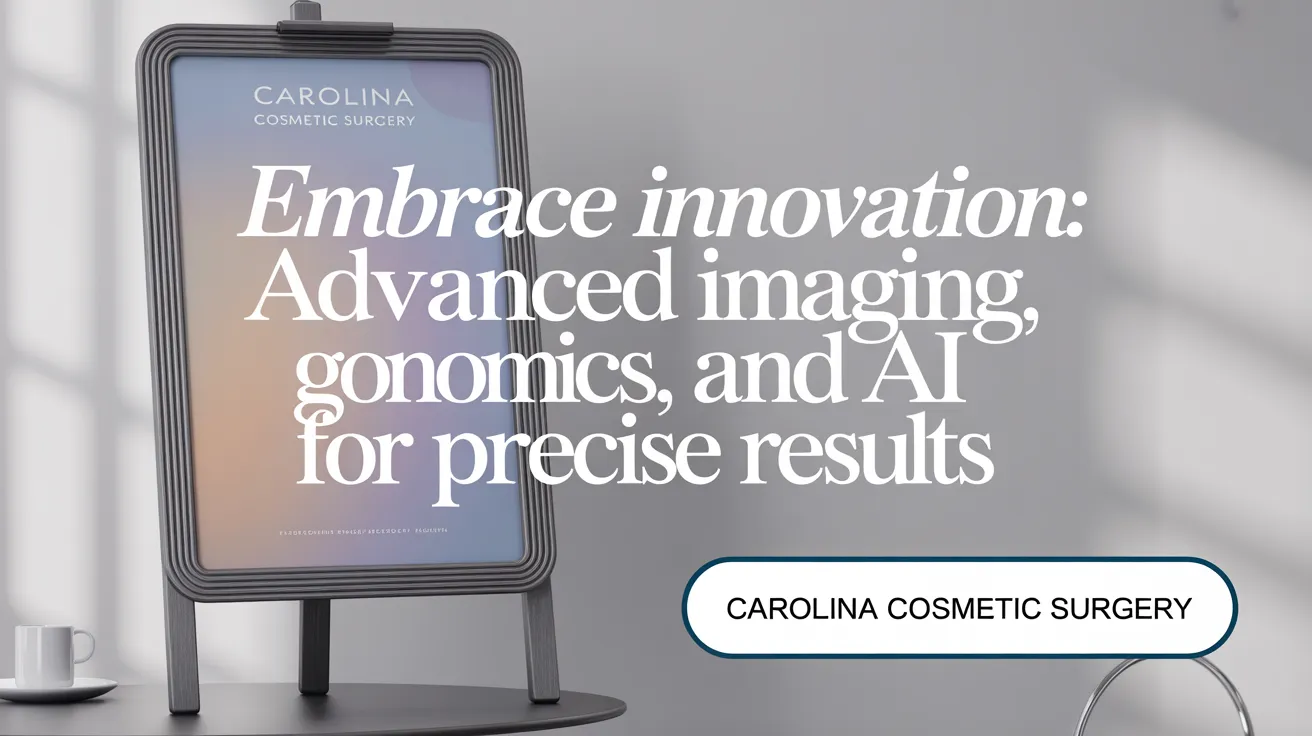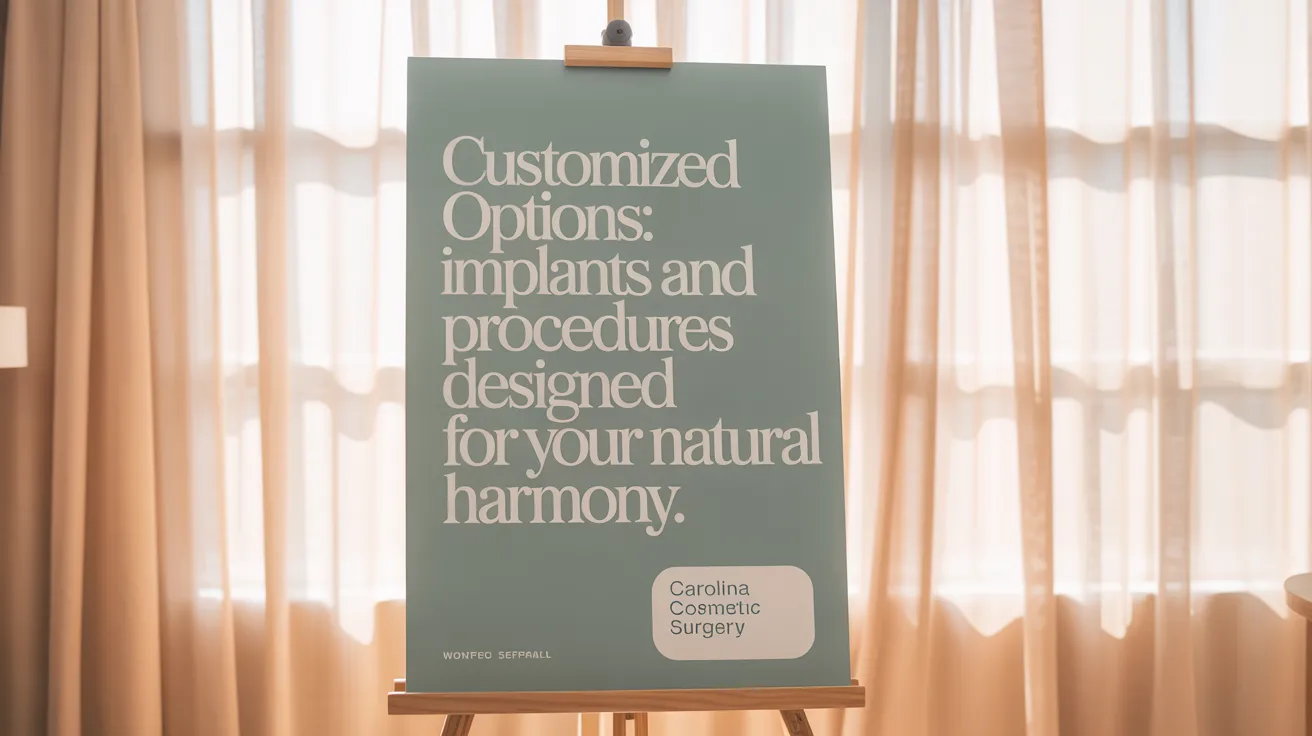The Art and Science of Tailored Cosmetic Surgery
In modern cosmetic surgery, a one-size-fits-all approach no longer suffices. To achieve the best results, surgeons now focus on developing personalized treatment plans that consider a patient’s unique anatomy, genetics, lifestyle, and aesthetic goals. This comprehensive approach integrates advanced technologies, meticulous consultation processes, and strategic treatment sequencing to ensure outcomes that are both natural and satisfying. This article explores the methods, influences, technologies, and considerations essential for crafting personalized cosmetic surgery plans designed to deliver optimal results.
Methods and Strategies for Developing Personalized Cosmetic Surgery Plans

What are the methods and strategies for developing personalized cosmetic surgery plans?
Creating a tailored cosmetic surgery plan begins with a comprehensive consultation process. Surgeons conduct in-depth assessments of the patient's medical history and aesthetic aspirations. This involves understanding the patient's unique facial features, body shape, skin condition, and lifestyle factors.
Utilizing advanced imaging technologies, such as 3D visualization and physical implant sizers like MENTOR® systems, helps patients see potential outcomes. This visual aid fosters realistic expectations and enhances shared decision-making.
Effective communication is essential. Surgeons discuss possible procedures, the sequence of treatments, and set clear, achievable goals. For example, treatments might be ordered to maximize results, such as performing skin tightening before volume restoration.
Scheduling plays a crucial role. Coordinated plans ensure treatments are timed appropriately, considering the patient’s calendar and upcoming events. This approach helps optimize recovery times and social readiness.
Integrating multiple treatment modalities, from surgical options like facelifts and breast augmentations to non-invasive procedures like chemical peels and injectables, allows a comprehensive approach that addresses various aesthetic concerns.
Lifestyle and budget considerations are thoughtfully incorporated. Surgeons review the patient’s activity level, financial factors, and long-term maintenance plans to tailor recommendations accordingly.
This personalized approach ensures each patient’s plan is flexible and adaptable, evolving with their changing needs. The goal is to achieve harmonious, natural-looking results that complement their individual features and lifestyle.
| Step | Focus Area | Techniques & Tools | Purpose |
|---|---|---|---|
| 1 | Consultation & Assessment | Medical history review, physical exam | Establish baseline and understand goals |
| 2 | Visualization | 3D imaging, physical sizers | Visualize potential outcomes |
| 3 | Communication | Goal discussion, expectation setting | Ensure clarity and realistic targets |
| 4 | Treatment Planning & Scheduling | Sequenced procedures, timeline planning | Optimize results and recovery |
| 5 | Multimodal Integration | Surgical + non-surgical treatments | Address all aesthetic concerns |
| 6 | Lifestyle & Budget | Activity, financial considerations | Tailor options to patient’s life |
By combining these strategies, surgeons craft bespoke plans that focus on safety, satisfaction, and natural beauty, aligning surgical outcomes with each patient's unique profile and aspirations.
Influence of Individual Anatomy, Genetics, and Patient Needs on Customizing Treatments

How do individual anatomy, genetics, and patient needs influence the customization of cosmetic treatment plans?
Personalized plastic surgery begins with an in-depth understanding of each patient’s unique physical features. Anatomical characteristics such as facial bone structure, skin quality, and body shape significantly influence the choice of procedures and their outcomes. For example, a face with strong bone support may require different lifting techniques compared to softer, more delicate features.
Genetics also plays a crucial role. Variations in skin elasticity, healing capacity, fat distribution, and susceptibility to scars or aging are genetically determined. Knowing a patient's genetic predispositions allows surgeons to tailor treatments more precisely. For instance, individuals with less elastic skin might benefit from less invasive methods or specific skin tightening techniques to ensure natural and lasting results.
Aging patterns vary among patients, influencing decisions on procedures like facelifts or neck lifts. Custom strategies are designed considering the specific areas most affected by aging, enabling targeted interventions that respect individual aging trajectories.
Recovery strategies are equally personalized. For patients with certain genetic or anatomical features, tailored post-operative plans—such as specific scar management or activity restrictions—enhance healing and satisfaction.
Lifestyle and aesthetic goals shape the overall approach. A highly active individual might require different implant choices or surgical techniques that align with their daily routines. Patients' desires for subtlety or dramatic change guide the selection of implant types, sizes, and incision approaches.
Recent advancements incorporate genetic testing and AI-driven assessments to predict potential risks and optimize surgical plans further. These tools help identify patient-specific risks like poor wound healing, enabling proactive measures to minimize complications.
In summary, integrating anatomical, genetic, and personal factors ensures that each cosmetic procedure is uniquely tailored. This individualized strategy enhances safety, natural appearance, and patient satisfaction, embodying the modern, patient-centered approach to plastic surgery.
Role of Advanced Technologies in Customizing Cosmetic Procedures

What advanced technologies, such as imaging, genomics, and artificial intelligence, are used in customizing cosmetic procedures?
Modern cosmetic surgery increasingly relies on innovative technologies to deliver personalized treatments tailored to each patient's unique features. Among these, 3D imaging and simulation software are vital tools that allow surgeons to visualize potential outcomes before the procedure begins. These advanced imaging techniques help create detailed models of facial or body structures, enabling patients and surgeons to discuss and refine aesthetic goals with greater clarity.
Genomic analysis is another cutting-edge approach that provides insights into individual genetic traits affecting healing, skin elasticity, and overall risks associated with surgery. By understanding genetic predispositions, surgeons can craft procedures that minimize complications and optimize results, ensuring a more successful and personalized experience.
Artificial Intelligence (AI) plays a significant role in enhancing personalization at multiple levels. It is used in patient education by creating accurate videos, booklets, and scripts that help inform patients about procedures, risks, and post-care routines. AI also supports tailored aftercare instructions by analyzing individual patient data to recommend recovery steps suited to their specific needs.
In practice management, AI streamlines scheduling, appointment booking, and social media presence, improving efficiency and enhancing the patient experience. Moreover, AI contributes to safety and precision by aiding in surgical planning and assisting in real-time decision-making.
While these technologies greatly improve customization, ethical considerations and limitations also exist. Experts caution against over-reliance on AI-generated before-and-after images for setting patient expectations, emphasizing instead the importance of authentic, real patient photos.
The integration of these advanced tools signifies a shift toward highly individualized care, making cosmetic procedures safer, more predictable, and more aligned with each patient's unique anatomy and goals.
| Technology Type | Application | Benefit | Challenges |
|---|---|---|---|
| 3D Imaging & Simulation | Visualizing outcomes, surgical planning | Better communication, precise prediction | Cost, learning curve |
| Genomic Analysis | Assessing healing and risks | Personalized risk management | Privacy concerns, interpretation complexities |
| Artificial Intelligence | Education, aftercare, practice management | Efficiency, tailored care, safety | Ethical issues, reliance on technology |
This synergy of advanced technologies helps aesthetic surgeons craft highly tailored, safe, and satisfying results, marking a new era in cosmetic medicine.
Comprehensive Planning and Sequencing of Aesthetic Treatments
Aesthetic treatments are carefully planned through a detailed assessment of each patient’s unique skin type, concerns, and healing capacity. This personalized approach ensures that the combination of procedures is best suited to their individual needs and desired outcomes.
The sequencing of treatments plays a vital role in achieving optimal results. Treatments are scheduled in a logical order that allows sufficient healing time, enhances the effectiveness of each procedure, and reduces the risk of side effects. For example, gentler procedures like chemical peels or microdermabrasion might be performed before more invasive interventions such as laser resurfacing, ensuring that the skin is well-prepared and can recover properly.
Combining different procedures can lead to a synergistic effect, addressing multiple aesthetic concerns simultaneously. Common combinations include Botox with dermal fillers, which work together to smooth wrinkles and add volume, or laser treatments combined with microneedling to improve skin texture and stimulate collagen production. Strategic combination not only enhances natural-looking results but also maximizes the overall aesthetic benefit.
To ensure patient safety and effective recovery, professionals tailor the sequence and combination of treatments based on individual skin responses and health status. Scheduling allows for proper healing between procedures, minimizing complications and downtime.
In practice, a well-planned approach might include starting with non-invasive treatments such as light chemical peels or laser therapy, followed by more invasive procedures if necessary. This careful planning creates a cohesive treatment plan that respects the patient’s anatomy and personal goals.
Ultimately, an expert-guided, personalized sequence of aesthetic treatments captures the benefits of combined therapies while safeguarding patient well-being. This structured approach leads to more natural, satisfying, and long-lasting aesthetic improvements.
Consultation Process and Essential Safety Considerations

What does the consultation process entail and what safety considerations are important when creating personalized cosmetic surgery plans?
The initial consultation for personalized cosmetic procedures is a thorough process that begins with reviewing the patient’s medical history, including allergies, medications, and any previous surgeries. A detailed physical examination is also conducted to assess anatomical features such as skin elasticity, facial structure, and body proportions.
During this stage, the surgeon engages in a transparent dialogue with the patient to understand their aesthetic goals, concerns, and lifestyle factors. This helps in developing a customized treatment plan tailored to the individual’s unique anatomy and hopes.
A critical aspect of the consultation is informed consent. Surgeons educate patients on the range of options available, potential risks, expected results, and recovery processes. This ensures that patients have realistic expectations and are aware of all considerations involved.
Safety considerations are integral and include verifying the patient’s eligibility for surgery, ensuring procedures are performed in accredited facilities such as the AAAASF-certified ambulatory surgery center, and strictly adhering to safety protocols from pre-operative planning through post-surgical care.
Creating personalized plans involves evaluating anatomical features, skin condition, and aging factors to optimize natural results. Continuous follow-up post-surgery allows for monitoring healing, managing any complications, and providing support to enhance safety and satisfaction.
In summary, a comprehensive consultation is essential for crafting safe and effective individualized treatment plans that align with patient goals while maintaining high safety standards.
Benefits and Considerations of Tailored Cosmetic Procedures
What are the benefits and important considerations of tailored cosmetic procedures designed to meet specific patient goals?
Personalized cosmetic procedures are designed to match each patient's unique anatomy, goals, and lifestyle. This customization results in more natural and satisfying results, as surgeons tailor procedures such as facelifts, breast augmentations, and body contouring to suit individual facial features, body shape, and skin condition.
Combining multiple procedures during one session can improve overall aesthetic outcomes, reduce recovery times, and lower costs, providing a more efficient pathway to achieving desired looks. However, thorough preoperative evaluation and expert consultation are essential to ensure safety and effectiveness.
Customized treatment plans help address specific concerns more effectively, reducing the chance of complications or the need for revisions. Continuous postoperative follow-up enjoys a critical role in supporting proper healing and ensuring long-term satisfaction.
The involvement of board-certified surgeons is fundamental in delivering safe, professional care, and precise aesthetic results. Their expertise ensures that each procedure aligns with the patient's goals while maintaining the highest safety standards.
In summary, adopting a patient-centered, personalized approach in cosmetic surgery maximizes the chances for a successful transformation—achieving natural beauty, reducing risks, lowering costs, and enhancing overall satisfaction.
Personalized Breast Augmentation and Body Contouring Approaches

How are implant size, shape, and placement tailored to the individual?
In personalized breast augmentation, surgeons carefully select implant size and shape based on each patient's unique anatomy and aesthetic goals. They consider factors like chest width, tissue thickness, and skin elasticity to choose the best implant profile and shape. Placement options, whether above or below the muscle, are decided to optimize natural appearance and minimize complications.
Why does considering body frame and activity level matter?
A patient’s overall body frame and activity level play crucial roles in customizing procedures. Active individuals or those with a smaller frame may need different implant sizes or surgical techniques to ensure comfort and harmony with their body. This personalized planning reduces the risk of discomfort and enhances long-term satisfaction.
How is the physical sizing system utilized?
Tools like the MENTOR® Sizing System aid surgeons in visualizing potential outcomes with physical implant sizers. Patients can see and feel how different options may look on their bodies, leading to more informed decisions. This practical approach helps align implant choices with personal expectations.
What role does aesthetic harmony and lasting results play?
Focusing on aesthetic harmony, personalized plans aim to achieve proportions that complement each patient’s natural features. Careful customization enhances long-lasting results and reduces the need for revision surgeries, ensuring patients are satisfied with their appearance over time.
How are personalized plans integrated into broader treatment approaches?
Personalized breast augmentation is part of a comprehensive treatment plan that includes thorough consultation, medical history review, and physical examination. Surgeons consider additional factors like lifestyle, activity level, and specific body features, ensuring the procedure aligns with overall patient goals.
Examples of customization: Brazilian Butt Lift and Kybella
Procedures like the Brazilian Butt Lift (BBL) are tailored by evaluating body shape and fat distribution to enhance natural curves.
Kybella injections are customized based on the degree of submental fat and skin condition, ensuring effective fat reduction and skin tightening.
This personalized strategy across various treatments contributes to natural-looking, satisfying results centered around patient-specific anatomy and preferences.
The Future of Personalized Cosmetic Surgery: Excellence Through Individualization
Crafting personalized cosmetic surgery plans is an evolving art that combines deep understanding of individual patient needs with the latest technological advancements and rigorous safety standards. From initial consultations to advanced genomic insights and AI-driven tools, personalization optimizes surgical outcomes and patient satisfaction by respecting unique anatomy, genetics, and aesthetic goals. Strategic planning and sequencing of treatments enable harmonious, natural-looking transformations that minimize risks and recovery times. As board-certified surgeons continue to prioritize patient-centered approaches and comprehensive care, the future promises even greater efficacy and innovation in cosmetic surgery tailored specifically to each individual’s vision of beauty and wellness.
References
- Tailored Personalization in Plastic Surgery
- AI-supported plastic surgery planning: Is technology ...
- Understanding the Value of Personalized Breast ...
- DeLozier Plastic Surgery: Plastic Surgery in Nashville
- How to Create an Effective Cosmetic Treatment Plan
- Prioritizing Safety and Ethics in Plastic Surgery | Daniels Group
- 4 Safety Considerations in Plastic Surgery
- Tailored Personalization in Plastic Surgery
